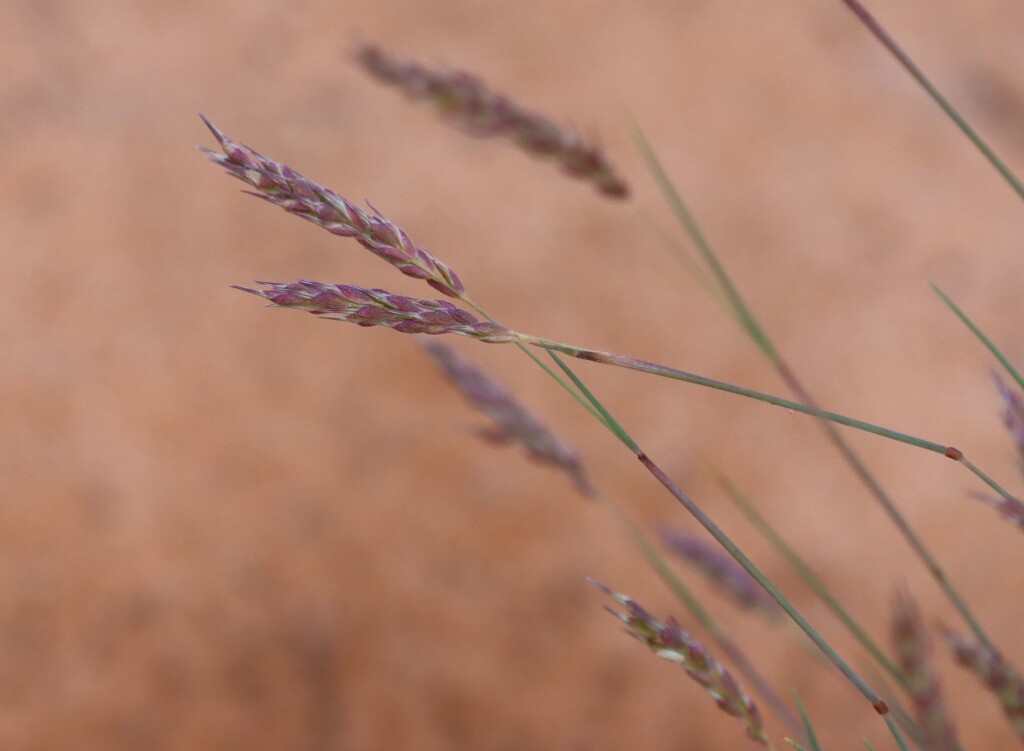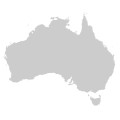Amphipogon caricinus var. caricinus
Long Grey-beard GrassCompact, densely tufted perennial; culms erect, 20–50 cm high, glabrous except for a few antrorse, glandular hairs above the nodes. Leaves glabrous (except bract-like, basal cataphylls and margins of the lowest sheaths which are sparsely to densely ciliate); blade terete-convolute, rather rigid, needle-pointed, to 25 cm long and c. 1 mm diam.; ligule densely ciliate, 0.5–1 mm long. Inflorescence 2–4 cm long; glumes unequal, ovate, 3–7 mm long, the upper exceeding the lower by 1–2 mm, papery, with scattered, tubercle-based hairs; lemma 6.5–8 mm long (including awns), the body finely tuberculate, half as long as the awns or slightly more, 3-nerved, with 2 lines of silky hairs between the mid and lateral nerves; awns densely ciliate, spreading at maturity; margin of lemma membranous, produced at each side into a deciduous wing about half as long as awns. Flowers mostly Sep.–Jan.
LoM, MuM, Wim, VRiv, RobP, GGr. Also WA, NT, SA, Qld, NSW. Occurs on deep sands, usually on dune-crests or low rises of the Big Desert and Sunset Country in the far north-west.
An 1853 specimen labelled 'Grampians' suggests a former more southerly distribution, but in the absence of other collections from this well-collected area, doubt must exist about the accuracy of the label accompanying the specimen.
There are 3 varietes of the species, var. caricinus being the most widespread, the other 2 confined to northern Australia.
Walsh, N.G. (1994). Poaceae. In: Walsh, N.G.; Entwisle, T.J., Flora of Victoria Vol. 2, Ferns and Allied Plants, Conifers and Monocotyledons, pp. 356–627. Inkata Press, Melbourne.
 Spinning
Spinning


